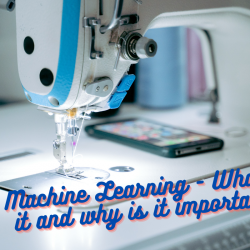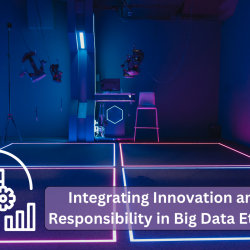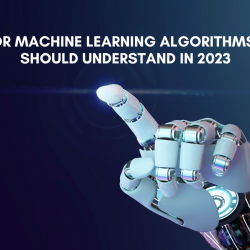Earthquake Prediction is Revolutionized by AI (Artificial Intelligence) and Deep Learning


Introduction to Earthquake Prediction
Earthquake prediction has been a challenge for earthquake scientists for centuries. Thanks to advances in AI (artificial intelligence) and deep learning, that challenge is now being revolutionized. AI and deep learning offer researchers a way to drastically increase the accuracy of forecasts and potentially save lives.
By taking advantage of large data sets, AI and deep learning provide a new approach to predicting earthquakes. The data is then used to generate predictive models as well as identify patterns that can be used to forecast future earthquakes.
AI and deep learning are also being used to develop more efficient methods for reviewing data, with many researchers using automated scripts or algorithms in order to speed up the process. With such powerful tools at their disposal, scientists can analyze vast amounts of complex data quickly, leading to more comprehensive results and improved predictions.
All this means that earthquake prediction is becoming increasingly accurate thanks to AI and deep learning technology. Not only could this lead to better forecasting capabilities but it could also help save countless lives around the world by reducing destruction caused by earthquakes – not just directly, but also by reducing the number of aftershocks due to people evacuating in time in response to an accurate alert.
The Benefits of AI and Deep Learning in Earthquake Prediction
As modern technology evolves, so do our capabilities to predict earthquakes. AI (artificial intelligence) and Deep Learning are revolutionizing the accuracy of earthquake predictions — making it easier than ever to detect seismic activity. Here, we take a look at how these cutting edge technologies can help us be more prepared for natural disasters.
AI provides advanced capabilities to analyze and detect patterns related to seismic activity. With its sophisticated algorithms, AI is able to process large amounts of seismic data quickly and accurately, providing insights that weren’t available before. This allows for more accurate prediction of future earthquakes and improved disaster preparation.
Deep Learning takes things a step further by being able to uncover complex relationships between multiple datasets related to seismology. By combining data sources such as ground motions, satellite imagery and atmospheric records, Deep Learning is able to provide a much more comprehensive understanding of the relationships between environmental factors and seismic events, leading to improved earthquake prediction accuracy.
Earthquake prediction is becoming increasingly important as populations grow and development increases in susceptible areas — making it crucial that we use the latest technologies available such as AI or Deep Learning for more accurate predictions and better preparedness measures in case of seismic events.
Full Stack Development Course Manchester
How AI and Deep Learning Revolutionize Earthquake Prediction
Deep learning algorithms are used to analyze large datasets of earthquake data to create machine learning models that can identify patterns and anomalies before an earthquake occurs. These models can then help seismologists better understand the behavior of earthquakes in order to predict when one is likely to occur in specific regions. Furthermore, automated seismic monitoring processes can be implemented using AI which helps to give a more complete picture of the world’s seismic activity.
The pattern recognition capabilities of AI make them extremely useful in predicting earthquakes, as they are able to detect subtle changes in seismic activity that may indicate potential hazards. This means that predictions become more accurate as more data is gathered over time – allowing scientists to detect minor shifts that may otherwise have gone unnoticed.
Overall, AI and deep learning are making a significant contribution towards enhancing our understanding of earthquakes and improving our ability to predict them accurately and efficiently. The increased accuracy resulting from these technologies has enabled scientists to better prepare for natural disasters, giving us more time than ever before to respond appropriately and minimize losses where possible.
Investment Banking Course Manchester
Examples of Improved Predictive Capabilities Through AI and Deep Learning
Predicting the timing and magnitude of earthquakes has been an elusive goal within the scientific community. In recent years, artificial intelligence (AI) and deep learning have revolutionized earthquake prediction by providing more accurate analysis and forecasting.
Earthquake Prediction
AI/Deep Learning applications can be used to study thousands of years of past seismic events in order to recognize patterns that could identify future shifts in plate movement. By analyzing data from multiple sources such as satellite imagery, GPS tracking systems, seismometers, and other sensors & probes, AI/deep learning algorithms can detect subtle changes in earth movements which act as a precursor to a potential seismic event.
Data Analysis & Processing
In addition to studying past seismic events to predict future ones, AI/deep learning applications can also be used for gathering data from different sources such as seismometers or GPS tracking systems in order to analyze it for patterns or abnormalities that could help scientists better understand the dynamics behind an earthquake.
Data Science Course Manchester
Are we Ready for a Fully Automated System?
Recently, there has been increased interest in using AI and Deep Learning to revolutionize earthquake prediction. With the help of complex algorithms, scientists are attempting to build a fully automated system that can predict when an earthquake may occur. The thought of a fully automated system brings forth both benefits and risks, as well as questions about its cost/time efficiency and reliability.
AI and Deep Learning make it possible for an automated system to identify patterns in seismic data that may not have previously been recognized. This presents many new opportunities for improving our response to earthquakes, such as providing more accurate predictions of when they will happen or where the most damage is likely to occur.
However, it’s important to consider that an automated system carries its own risks as well. There is still a human component involved and errors can still occur when creating the complex algorithms needed for such systems. Additionally, monitoring and keeping track of these systems over time is key to ensuring accuracy and reliability.
The question of whether we are ready for a fully automated system depends heavily on how reliable that system can be made in terms of accuracy and consistency over time. Recent advances in AI and Deep Learning have been promising in this regard, but there is still much work that needs to be done before such a system can be considered safe enough for use in predicting earthquakes.
Full Stack Development Course London
Seismology’s Continued Role in Earthquake Prediction
AI and deep learning offer a powerful tool for mining massive amounts of data that can lead to improved accuracy in forecasting earthquake activity. By drawing on historical analysis and advanced mathematical modeling techniques, seismology researchers can now develop better predictions based on comprehensive simulations of seismic activity.
In addition to improved predictive capacity, AI and deep learning are also driving advances in seismic monitoring technology. Realtime data gathering systems have been upgraded to take advantage of automated cloud computing capabilities that update frequently with more detailed readings than were previously possible using manual measurements alone.
In conclusion, AI and deep learning technologies have revolutionized the science of earthquake prediction by providing seismologists with exponentially increased data processing capabilities that can translate into lifesaving insights when it comes to anticipating seismic activity. As we continue to refine the accuracy of our predictive models through collecting ever increasing amounts of data, seismology is becoming ever more reliable at predicting when an earthquake might strike and this could make all the difference in minimizing damages related to future events.






Ingen kommentarer endnu